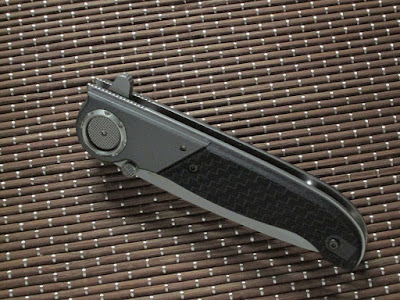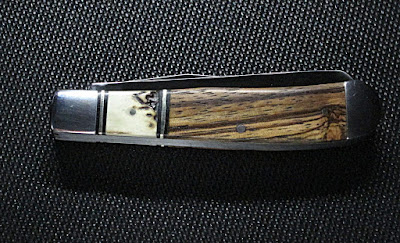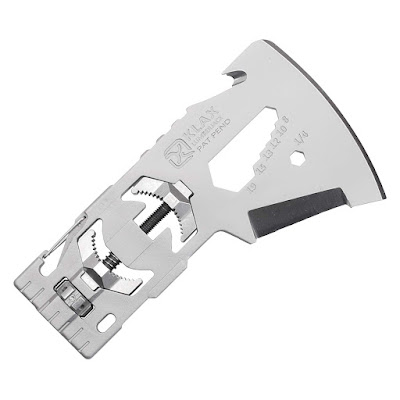I’ve always thought CRKT’s
production of Kit Carson’s M-16 knife design was genius. Of course much of that
had to do with Carson’s design for a sleek and effective flipper knife. Combine those ideas with the Deadbolt®
Locking Mechanism designed by Flavio Ikoma and the IKBS™ Ball Bearing Pivot
System and you get the hot, new for 2020 CRKT M40-02.
 |
| The M-40 from the company everyone likes to call Cricket or CRKT |
Here are some specs:
- Blade Length 2.9 inches
- Closed Length 3.9 inches
- Overall Length 6.875 inches
- Weight 3.3 oz
- Blade Steel 1.4116 This martensitic stainless steel contains 0.45-0.5% carbon and 14.6% chromium. But the secret sauce is 0.1-0.25% vanadium. Vanadium forms very small very hard carbides that give the steel its strength and wear resistance. It is an older steel alloy and might be thought of as similar in performance to 420HC steel made famous by Buck Knives.
I’m not a steel junkie. Properly harden and temper a good steel and
you’ll get better performance than most of us will ever need. At least, I will. Most of my knives are working blades.
The Deadbolt® Locking Mechanism is
simple to use one handed and prevents your fingers from ever getting between
the closing blade and the handle.
 |
| One hand close |
The
lock is reported to be the strongest lock on the market, of course as Bill
Clinton testified, it all depends on definitions. Still I’m impressed with it and we’re going
to see this lock on a lot of knives.
 |
| Press the Deadbolt lock to close |
I liked the way flipper flies the
blade open and the pattern of alternating parallel line checking really jazzes
up the glass reinforced nylon handle. The
two steel liners illustrate my favorite CRKT virtue: their engineering and
construction makes for a hell of good knife.
 |
| Flipper me open, the knife seems to say. |
The clip is reversible and it comes
set up for tip up right hand carry. I
remember pleading with CRKT at a SHOT Show 15 years ago to move to tip up and
reversible clips. They didn’t listen to
me, but thank God they listened to someone!
The tanto seems to fit the pattern better than a spear point.
 |
| The bow-tie is part of the Deadbolt lock. You going to see a lot of this! |
It feels good in my hand, looks
good and I think it’s a great little knife.
I think you will like it for an EDC.
The suggested retail price is $140.00. You can get yours at https://www.crkt.com/m40-02.html.



